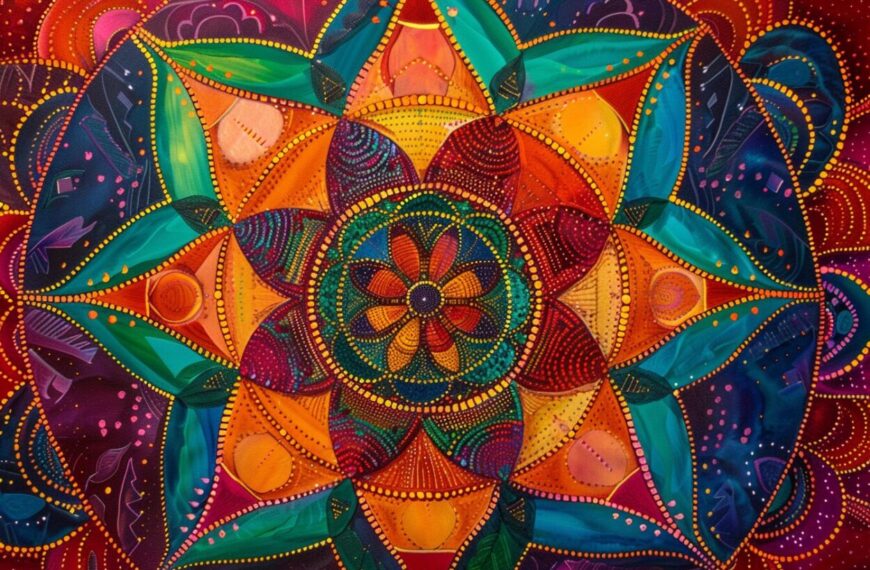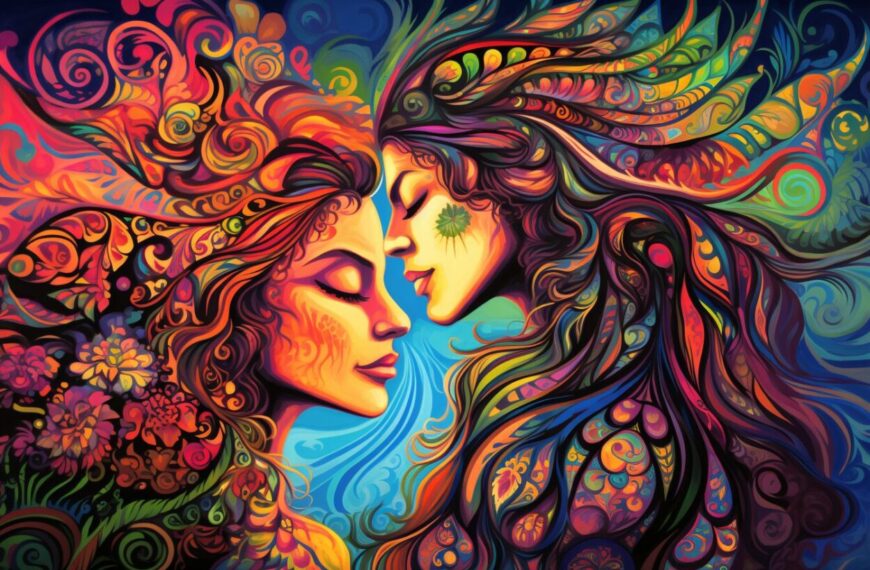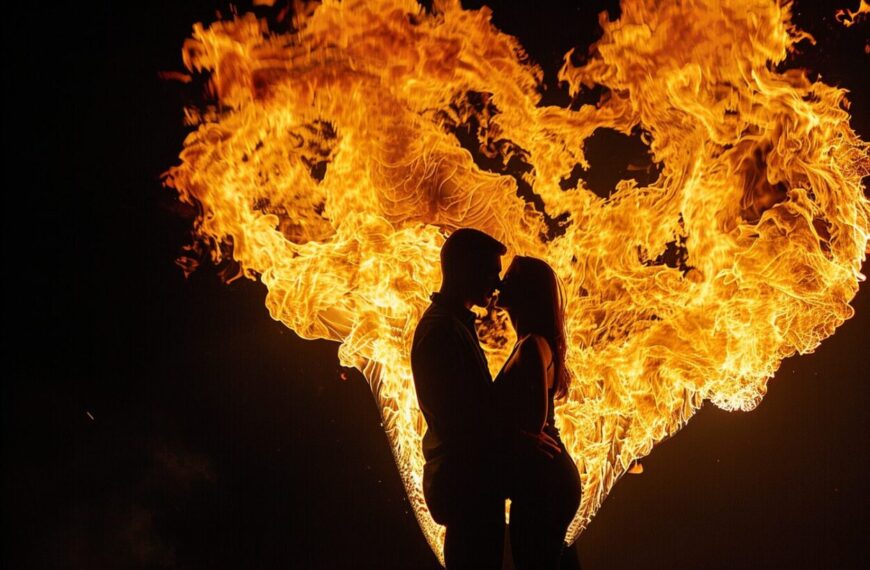Symbolism of The Star Across Arts and Cultures
A star is a luminous sphere of plasma, held together by gravity, commonly seen in space. Stars, including our Sun, are vital for light and heat. They have long captivated human imagination, inspiring myths, art, and cultural symbols.
In art, stars symbolize guidance, inspiration, and hope, often depicted as lights in darkness, reflecting the human spirit’s perseverance. In mythology, stars are linked to deities and celestial beings; for example, ancient Greeks believed stars were the souls of heroes and gods. Many indigenous cultures view stars as ancestral spirits offering protection and wisdom.
In this article, we’ll explore the symbolism of the star in-depth across cultures and history.
General Meaning of The Star
1. Guidance and Navigation

Polaris, also known as the North Star, has been a crucial navigation tool for sailors and travelers in the Northern Hemisphere for centuries. Positioned almost directly above the North Pole, it remains relatively fixed in the sky, providing a constant point of reference.
During the Age of Exploration, European explorers like Christopher Columbus and Ferdinand Magellan used Polaris to navigate the seas, ensuring they maintained their course during long voyages across the Atlantic and Pacific Oceans.
Before the advent of modern navigation technology, mariners relied on celestial navigation, using the positions of stars, the Sun, and the Moon to determine their latitude and longitude. The Polynesians mastered the art of celestial navigation to explore and settle vast regions of the Pacific Ocean. They used star maps, memorized star paths, and observed the stars’ rising and setting points to guide their voyages across thousands of miles of open sea.
2. Hope

During difficult times, such as wars or personal struggles, people often look to the stars as a reminder that there is something eternal and unchanging, offering a sense of stability and hope for a better future. Stars shine brightly in the night sky, providing light in the darkness. This represents the idea that even in the darkest times, there is always a glimmer of hope and the possibility of a brighter future.
The phrase “reach for the stars” is commonly used to motivate people to aim high and pursue their dreams, regardless of how unattainable they may seem. It suggests that striving for excellence, even if one falls short, leads to greater achievements.
3. Divine and Spiritual Connection
In Greek mythology, many constellations are associated with gods and heroes. For instance, Orion is a giant hunter placed among the stars by Zeus. These mythological stories emphasize the belief that stars are a bridge to the divine and the spiritual realm.
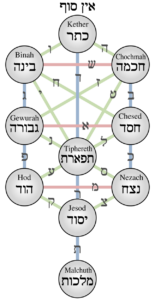
Similarly, in Kabbalah, the Tree of Life diagram is often associated with celestial bodies, including stars, to illustrate the flow of divine energy.
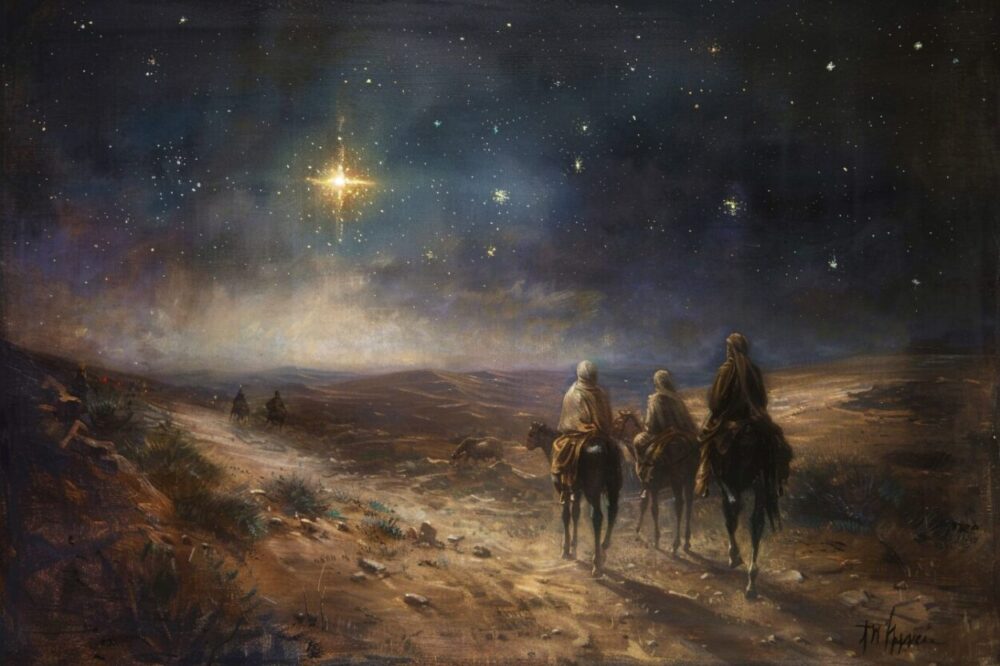
The Star of Bethlehem, also known as the Christmas Star, is a celestial phenomenon described in the Gospel of Matthew in the New Testament. It is said to have guided the Magi, or Wise Men, to the birthplace of Jesus Christ in Bethlehem.
In the Gospel of Matthew (Matthew 2:1-12), the story begins with the Magi from the East arriving in Jerusalem, asking, “Where is the one who has been born king of the Jews? We saw his star when it rose and have come to worship him.” King Herod, disturbed by this news, consulted his advisors who referenced the prophecy of a ruler coming out of Bethlehem. Herod then sent the Magi to Bethlehem, instructing them to find the child and report back. The star they had seen in the East went ahead of them and stopped over the place where the child was. Overjoyed, the Magi found Jesus with his mother Mary and presented him with gifts of gold, frankincense, and myrrh.
4. Achievement and Success

Stars are used in rating systems to provide an easily understandable metric of quality and performance. Online platforms like Amazon and Yelp use star ratings to indicate customer satisfaction and product quality. A five-star rating signifies excellence, helping consumers make informed decisions.
The Michelin Guide awards stars to restaurants to denote their quality. A three-star Michelin rating is considered one of the highest honors in the culinary world, symbolizing exceptional achievement. Schools also use stars to reward students for high achievement. Gold star stickers are commonly given to students who excel in their studies or demonstrate exemplary behavior.
The same is true for the military. The Medal of Honor, the highest military decoration in the United States, features a gold star surrounded by a wreath. This star symbolizes the exceptional bravery and sacrifice of the recipient.
5. Fame

The term “star” in reference to famous actors and entertainers likely emerged because of their “shining” presence in their respective fields, much like stars shining in the sky. The Hollywood Walk of Fame, established in 1960, physically embodies this connection. Celebrities are honored with star-shaped plaques embedded in the sidewalks of Hollywood Boulevard, reinforcing the idea that these individuals are the “stars” of their industry.
6. Beauty and Wonder

On a clear night, a sky filled with stars can leave viewers in awe of the universe’s grandeur. The natural beauty of constellations and the Milky Way showcase the stars’ majestic presence. The Hubble Space Telescope has captured stunning images of distant stars, nebulae, and galaxies, revealing the intricate and breathtaking beauty of the cosmos. These images inspire wonder and curiosity about the natural world.
Vincent van Gogh’s famous painting “Starry Night” captures the swirling, luminous quality of stars, evoking a sense of wonder and emotional depth. The painting is celebrated for its portrayal of the night sky’s beauty and the artist’s awe of nature.
Star Symbolism in Mesopotamia
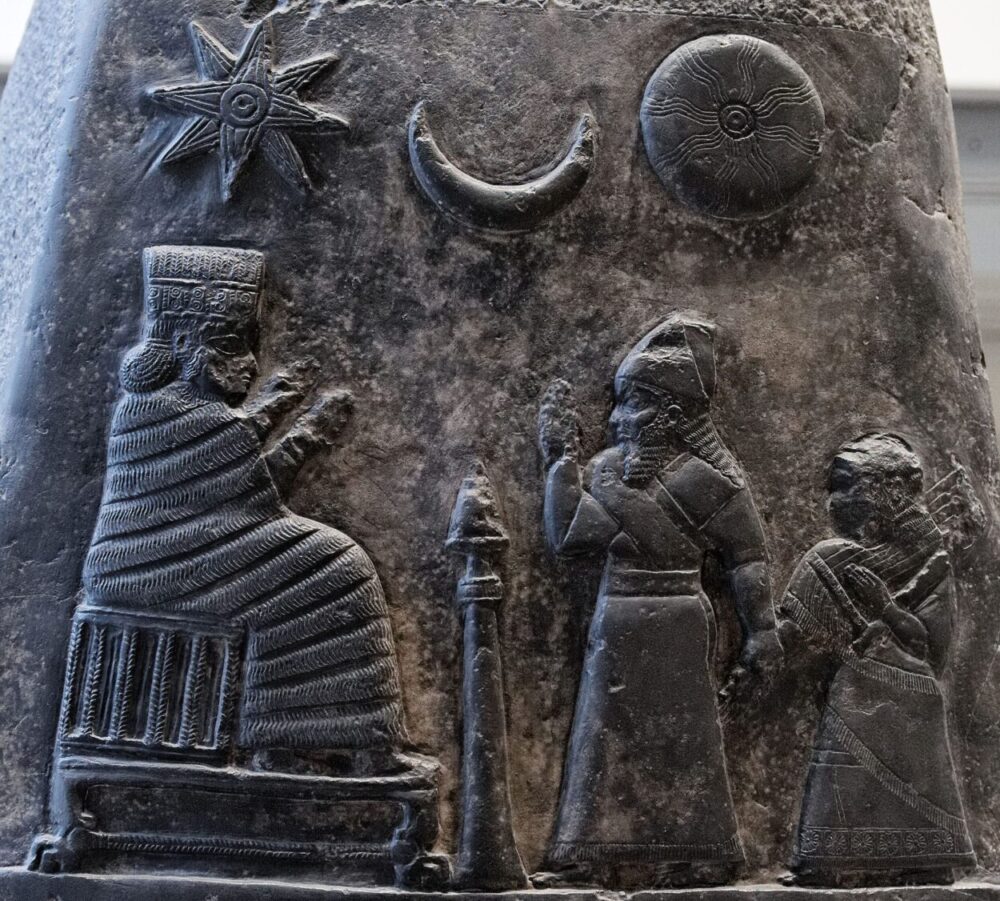
Often referred to as the “Cradle of Civilization”, Mesopotamia was home to some of the earliest known complex societies, including the Sumerians, Akkadians, Babylonians, and Assyrians. These ancient civilizations were keen observers of the night sky, and stars played a critical role in their understanding of the cosmos and their daily lives.
Ishtar, also known as Inanna in Sumerian tradition, was one of the most important deities in the ancient Mesopotamian pantheon. She was revered as the goddess of love and fertility, as well as war and political power.
Many stars and planets were personified and deified in Mesopotamian mythology. For example, the planet Venus was associated with the goddess Inanna (Sumerian) or Ishtar (Akkadian/Babylonian). She was a major deity associated with love, beauty, sex, fertility, and war. The constellation we now call Taurus was known as the Bull of Heaven and was associated with the epic of Gilgamesh. In the myth, the Bull of Heaven is sent by the goddess Ishtar to punish Gilgamesh and Enkidu.
Star Symbolism in Egypt

The star Sirius, known as Sopdet in ancient Egyptian, was a crucial astronomical marker. Its heliacal rising, which occurs just before sunrise, was one of the most significant events in the Egyptian calendar. The heliacal rising of Sirius signaled the beginning of the inundation of the Nile River, a vital annual event for Egyptian agriculture. The floodwaters enriched the soil with nutrients, enabling the cultivation of crops and sustaining the agrarian economy of Egypt.
Another interesting star symbolism in Egypt appears in the construction of the pyramids. The pyramids were meticulously aligned with specific star constellations to ensure that the deceased pharaohs could join the gods in the afterlife. The alignment with Orion’s Belt, for instance, was meant to facilitate the pharaoh’s journey to the divine realm.
The Temple of Abu Simbel, built by Ramses II, was oriented so that during the winter solstice, the sun’s rays would illuminate the inner sanctum, highlighting the connection between the temple and the celestial forces.
Star Symbolism in Greek Mythology
In Greek mythology, constellations were referred to as katasterismoi, with the twelve signs that intersect with the sun’s path at dawn known as the zodiac or zodiakos kyrklos (“circle of small animals”). These constellations were seen as semi-divine beings, often representing god-favored heroes or mythical creatures whose deeds were memorialized among the stars. They were viewed as living, conscious entities that traversed the heavens.
The zodiac includes twelve notable constellations: Aries (Chrysomallus, the Golden Ram), Taurus (the Cretan Bull), Gemini (the Dioscuri, Castor and Pollux), Cancer (Carcinus, the Crab), Leo (the Nemean Lion), Virgo (Astraea, the Virgin), Libra (Astraea, the Scales), Scorpio (Scorpius, the Scorpion), Sagittarius (Chiron, the Centaur), Capricorn (Aegipan, the Goat-Fish), Aquarius (Ganymedes, the Water Bearer), and Pisces (Ichthyes, the Fish).
The movement of constellations was thought to be controlled by cosmic forces. The Greek cosmos was envisioned as a solid dome spun by the Titan Atlas, with stars moving in a cyclical pattern around the celestial pole. The constellations in Greek myths often symbolize moral or ethical lessons. Virgo (Astraea) represents justice and purity, while Scorpio symbolizes vengeance and punishment.
Symbolism of the Stars in Taoism

Bugang (步罡) is an ancient Taoist ritual practice involving the symbolic act of walking in specific patterns to connect with celestial forces and spiritual energies. The term “Bugang” translates to “stepping on the Gang,” with “Gang” referring to the celestial pole star or the Big Dipper (Ursa Major) constellation, which holds significant spiritual and astrological importance in Daoism. Here’s an explanation of Bugang and how star symbolism is incorporated:
Practitioners of Bugang walk in predetermined patterns that often resemble the Big Dipper constellation. These movements are performed in a ritualistic manner, typically within a sacred space such as a temple or an outdoor ceremonial ground.
Bugang is considered a form of moving meditation that helps practitioners focus their mind, align their spirit, and attain a higher state of consciousness. The ritual aims to cultivate inner peace, spiritual insight, and a deeper connection with the Dao (the fundamental principle underlying the universe).
Symbolism of the Stars in African and Indigenous Cultures
In traditional South African societies, the night sky and its stars were deeply embedded in folklore and proverbs, with many stories and myths passed down through generations.
The Pleiades, known as isiLimela, were called the “digging stars” because their appearance signaled the time to start hoeing the ground. Across Africa, these stars marked the beginning of the growing season.
The Xhosa counted years of manhood from June when isiLimela first appeared.
In Namaqua mythology, the Pleiades were daughters of the sky god, and their husband Aldebaran’s arrow (Orion’s sword) fell short when he aimed at three zebras (Orion’s belt), deterred by a fierce lion (Betelgeuse). Another tale tells of a girl with magical powers who turned fierce lions into stars, now seen in Orion’s belt.
Star Symbolism in Literature
The Twinkle, Twinkle, Little Star is a famous poem with star imagery. First published in 1806, it has been cherished by generations. The star in the poem is depicted as a steadfast, shining presence in the night sky, symbolizing a constant source of light and guidance in the darkness.

In Shakespeare’s iconic tragedy, stars are a central symbol of fate and destiny. The term “star-crossed lovers” suggests that Romeo and Juliet’s relationship is doomed by the alignment of the stars, a metaphor for the forces of fate that are beyond their control. The stars here represent the inevitability of their tragic end, influenced by external forces and circumstances.

In John Green’s contemporary novel, the title itself is a direct reference to fate. The phrase “the fault in our stars” suggests that the characters’ lives are affected by the positions of the stars, or their destinies, which are beyond their control. The stars symbolize the uncontrollable aspects of life, such as illness and death, which shape the experiences and relationships of the characters, particularly Hazel and Gus. The novel explores themes of love, loss, and the search for meaning in the face of inevitable suffering, with the stars representing the arbitrary and often unfair nature of fate.



